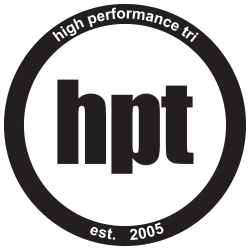Speed, Strength, Stamina, Skills
Endurance Sport …. The perfect mix of the “4 S’s”. Speed, Strength, Stamina, Skills. That’s why I love it. To me it’s the ultimate challenge.
From the heavily speed and physical skill dominant draft-legal race, to the stamina, strength and mental skill dominant Ironman there is something for everyone.
Thinking through your race, what are your “4S” needs? Because each race has it’s own profile.
This is all about the demands of competition. The number 1 rule of training - meet or exceed the demands of competition.
The single most important thing an athlete can do to train for their sport is have clarity in what they are doing when they are training. So let’s have a try at a Long Course and a Short Course event.
Port Macquarie Ironman:
Speed : The distance of the event means the average speed in swim bike and run will be quite low in terms of percentage of the athlete’s “top speed”. Any speedwork in training will be used to develop strength and “economy” of movement.
Strength : Huge strength component. Port Mac is quite a hilly course and the rough roads mean you need to be strong to keep the bike speed going. There’s no free speed out at Dungog. By the very nature of the event distance you will need all the strength you can get to be able to hold form under fatigue.
Stamina : No brainer. The major component of any Ironman is stamina. You will need to be good at conserving energy, taking energy on board, and managing the heart rate drift over such a long race. Racing an Ironman is all about going slow as fast as possible so your training will be all about finding that exact pace / speed that is manageable for a long period of time.
Skills : Physical skills are less dominant as everything moves a little slower in Ironman. Skills are very much about the race craft “soft skills” of pacing and nutrition as well as the obvious mental strength needed to simply keep going when all you want to do is stop.
Mooloolaba Standard Distance:
Speed : Given the race is over the standard distance this race will be pretty much done at your anaerobic threshold. Maximum Lactate Steady State is the speed that traditionally defines this event. So training will be more polarised to work both on lactate combustion and production. There is much less grey area when it comes to knowing your goal speed. Do a few test sets at threshold and you’ll pretty quickly know what speed to target.
Strength : Mooloolaba is not a hilly course but it’s also definitely not flat. The hills on the run when you are fatigued and it’s hot are the keys to success. Practice running at race pace over a hilly course in training when fatigued. Be strong to hold form so you can swim well in open water, stay in your aero position on the bike and run at your best economy. The best short course athletes usually have a decent strength component in their training.
Stamina : Standard distance might be called “short course” but there isn’t a lot of short in a 1:45-3:00 hour event. You have to be fast and have the stamina to hold it. Take your long run seriously and do lot’s of negative split runs for back end endurance.
Skills : Mental skills are needed but physical skills like transitions and bike handling over a shorter event can mean minutes off your time and those minutes can mean a lot of places. If you are racing short course, practice your skills.
Of course, these are the things I use when preparing an athlete to race. Luckily there is a lot of crossover in the events so training for a specific event can definitely “cross-pollinate”. Short course athletes can get a lot out of riding with the long course crew for stamina and the long course athletes can get a lot out of trying to keep up with the speed of the short course crew.
Your homework after reading this article is to profile your upcoming A race and identify what the 4 S’s look like. Then start building it into everything you do.
